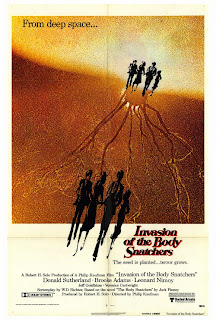
Although it was made in 1982, Rainer Werner Fassbinder’s film Die Sehnsucht der Veronika Voss looks like a product of 1955, the time that it depicts. Like Sunset Boulevard, it chronicles the last days of an aging former film starlet and the young man who is drawn into her strange world. Filmed in the style of a black and white Hollywood melodrama, Veronika Voss tells a compelling story on its own, but what really impresses is the way that Fassbinder uses these trappings to dress up a distressing critique of Germany’s place in the world.
When humble newspaper man Robert Krohn first befriends Veronika, he does not recognize her, but she either doesn’t notice or just chooses not to. She seduces him like a predator desperate for one last meal, and Krohn is easy prey. But as he becomes curious about her life, and the more he realizes that Veronika has fallen far from the peak of her stardom.
Veronika spends most of her time in an odd little psychiatric clinic. The lobby looks normal enough at first, but the further the film delves into the clinic the weirder it seems. Room are connected to each other by indoor windows and twisty hallways, and everything is decorated in white. Fassbinder creates the impression of a whitewashed maze that circles in on itself, and echoing up from deep in the centre of the maze comes the sound of a radio that’s always tuned to American hillbilly music. It’s never clear where exactly the music is coming from, but it’s always loudest in Veronika’s small room at the clinic, especially during her most desperate moments.
In a film that so ably apes 1950s melodramas, the bizarre American music stands out as the only really avant-garde element, and it is striking. There is also an African American GI who rather inexplicably seems to work at the clinic, or at least is always hanging around there. Fassbinder seems to be trying to draw a connection between the United States and the psychiatric clinic, and I think ultimately he’s making a statement about Germany’s dependence on American foreign aide after World War II.
The clinic primarily works as an underground morphine dispensary. Patients become addicts in order to numb their pain, and become dependent not just on morphine, but on the clinic itself. The clinic assumes control over their lives and assets, until the patient has nothing left to give.
Both of the patients that Fassbinder introduces us to have been nearly destroyed by World War II – Veronika’s fortunes and film career have been in decline ever since the end of the war, and the other patient is a wealthy and elderly Holocaust survivor. The clinic gives them comfort, but at the price of their freedom and identity.
By equating the morphine clinic to American intervention in German affairs, Fassbinder offers a critique of his country’s reliance on outside assistance, and it must have struck a chord with the German psyche, because Veronika Voss won best film at the Berlin International Film Festival upon its release.
Because I had to miss the first three films in the Fassbinder series, I can’t compare this film to the others that were shown, which is a shame! This was the first Fassbinder film I have seen, but I hope it will not be the last.














